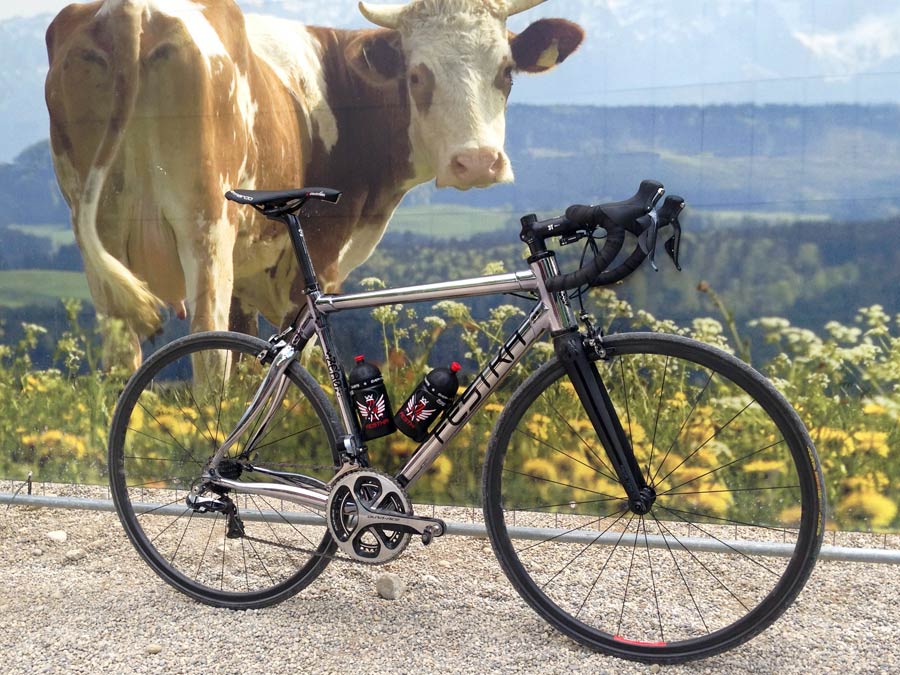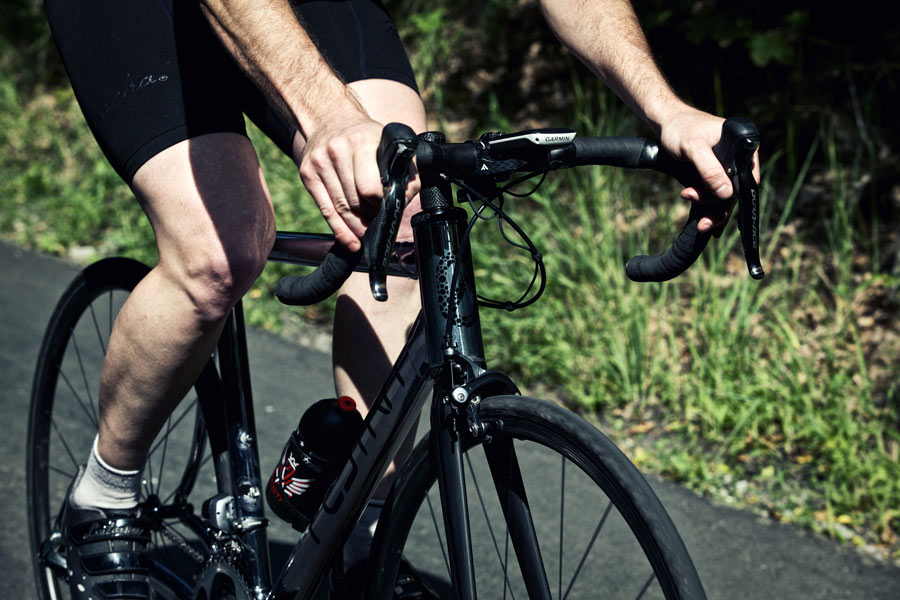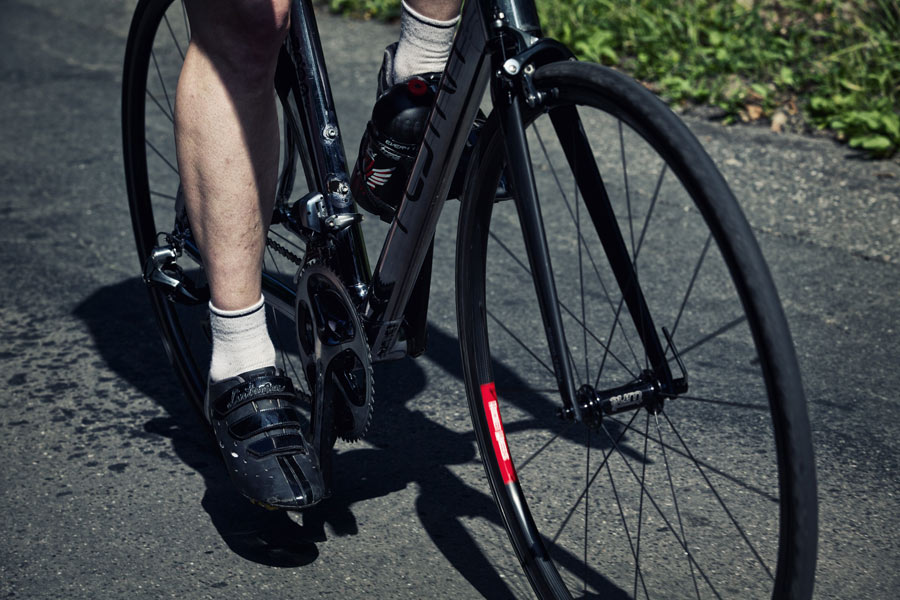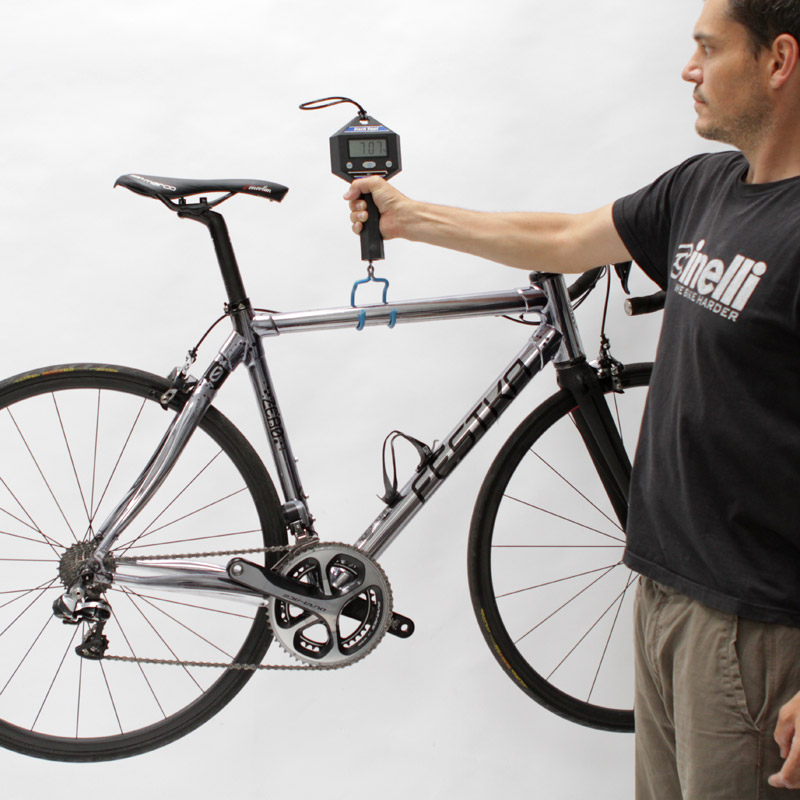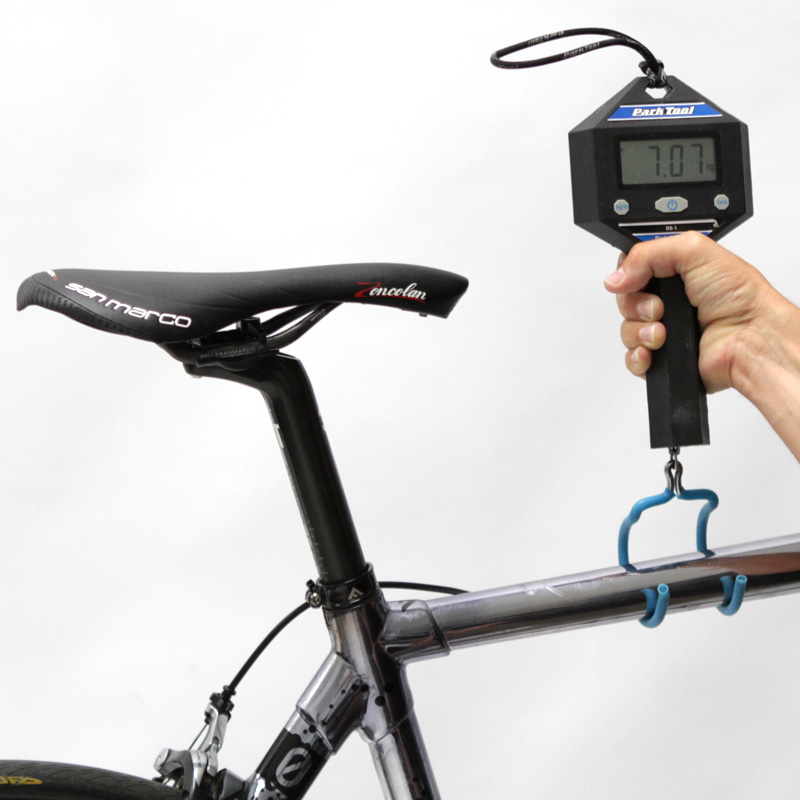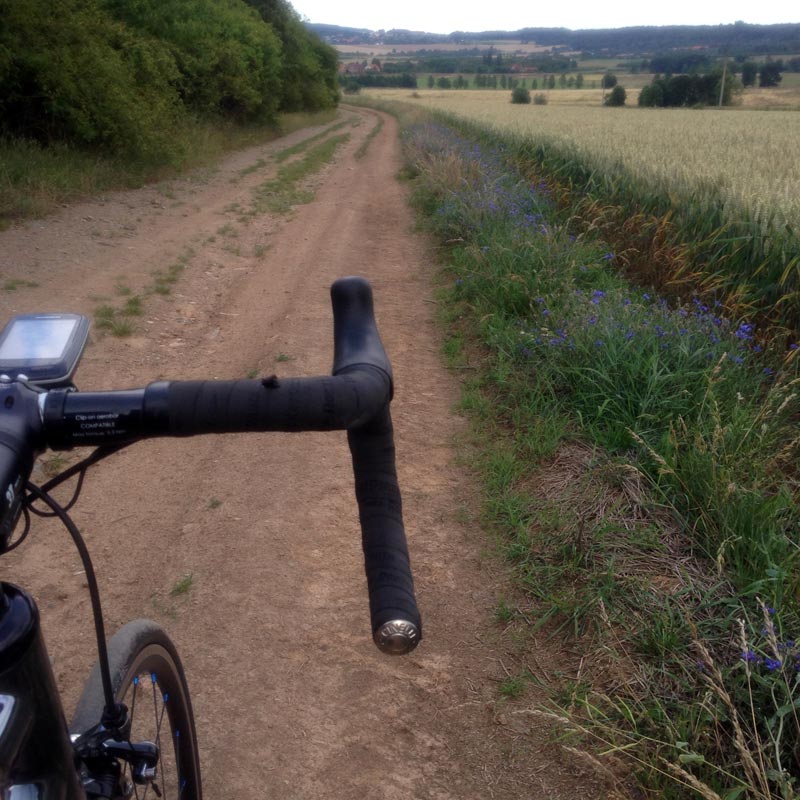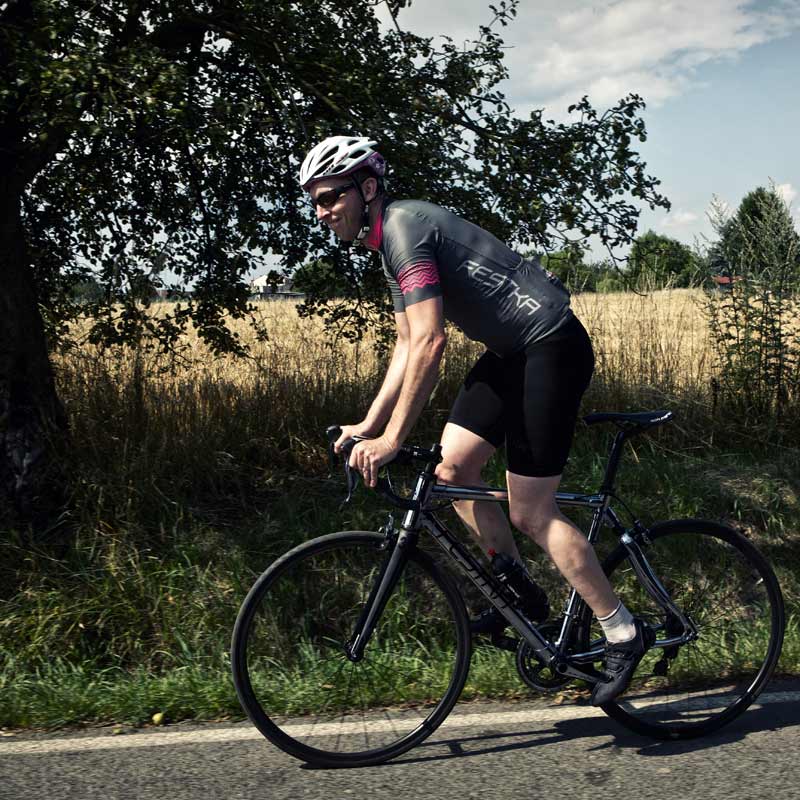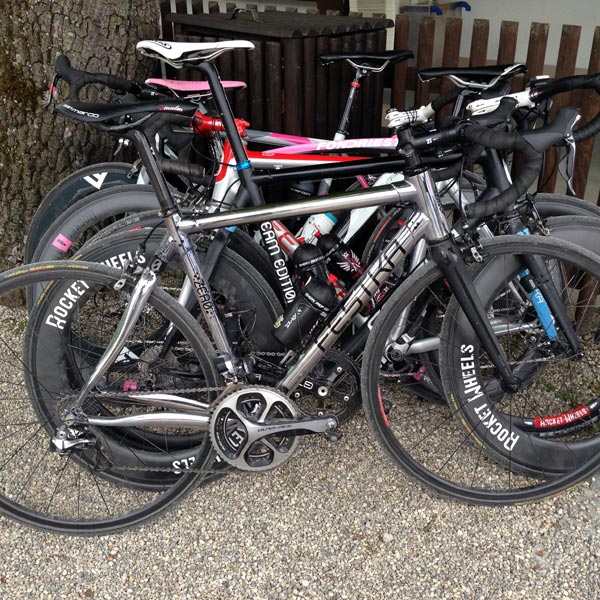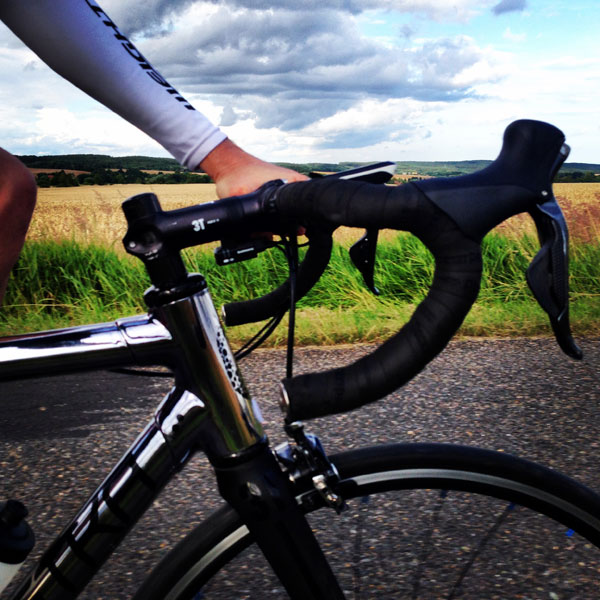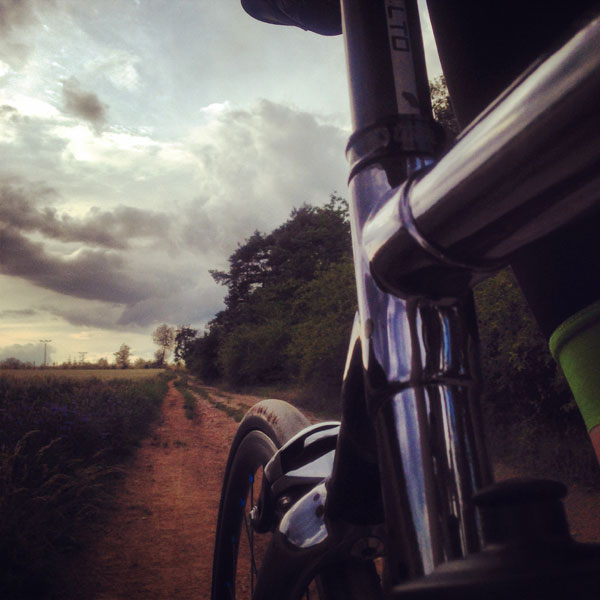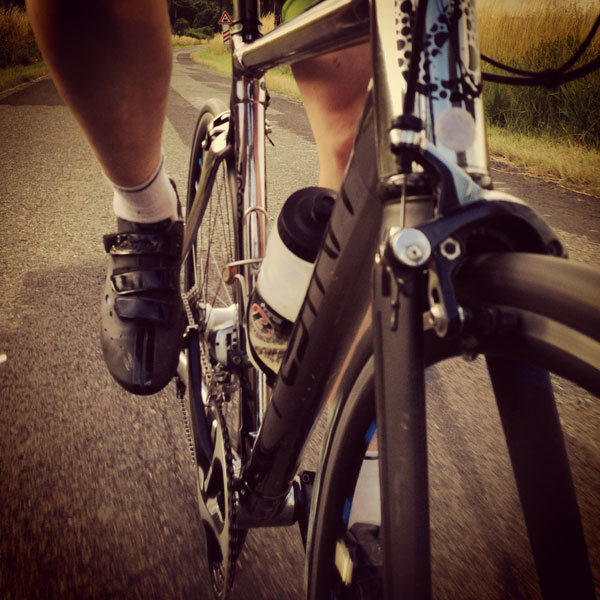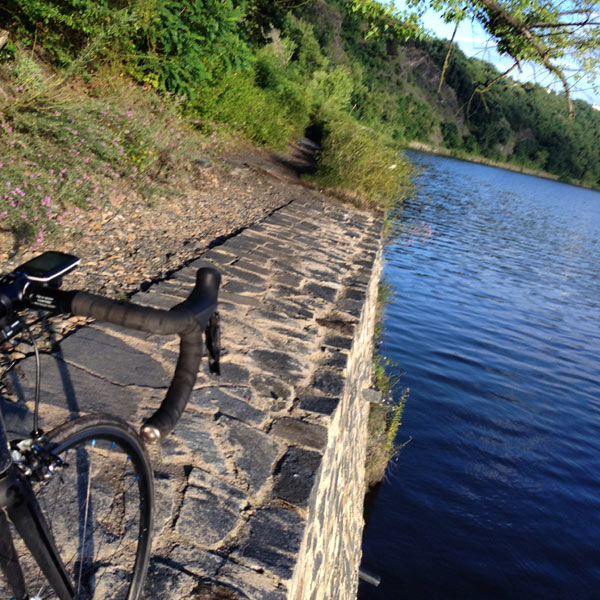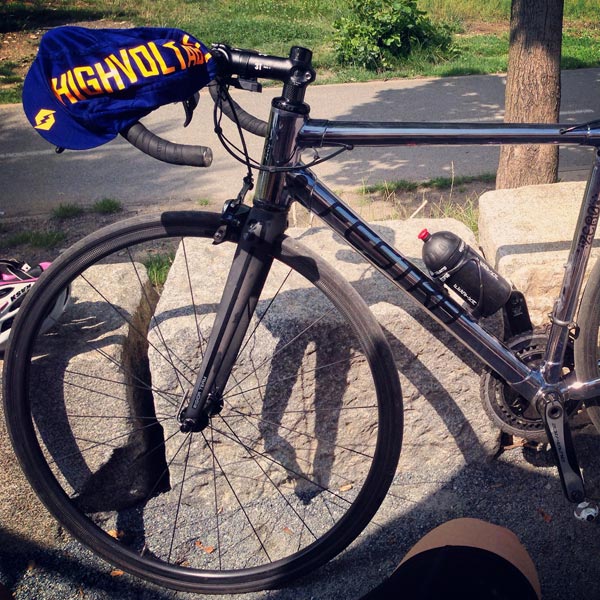Having grown out of their crowd funded Project 200 18 months ago, Festka has continued to refine their top performing lugged carbon race bike into the Zero Chrome we’ve had the chance to test throughout this spring and summer. Now with over four months on the bike mixed in with another very different carbon test bike, I’ve come to learn a thing or two about the road racer. So after riding more than 1000km on the Zero, on everything from road to trail, I’m ready to report back my thoughts.
Roll past the jump for the full in-depth review…
Some Background
Since it’s been a while since we first looked at the bike, here is a bit of a refresher. With a what seemed like a promising crowd funding scheme, we wanted to see what they had to offer with their top level frame. I agreed with Festka’s owners to take over a bike they had built specifically for NAHBS 2014, when they got back to Prague for an extended test. Also being situated in Prague, we were able to have the bike for 3-4 weeks out of each month for just over four months giving us a chance to test the bike on pretty much any terrain we could think of. Also with their in-house wheel brand we had the chance to test different depth carbon tubulars, as well as a set of aluminum clinchers.
The Zero grew out of their 2013 Project 200 program in a few iterations, and solidified into the bike as we tested (and continues to be the primary production version) around January 2014. Festka builds these bikes by hand in the shop in Prague, with a tube and lug system reminiscent of traditional lugged steel bike production that they designed and produce in their shop. The main tubing is also Czech-made, supplied by close cooperating partner Compotech. All this in-house work means it takes quite a number of man hours to build a frame, but also means that customization, from tubing characteristics to finishing work, is pretty much limited only by one’s imagination.
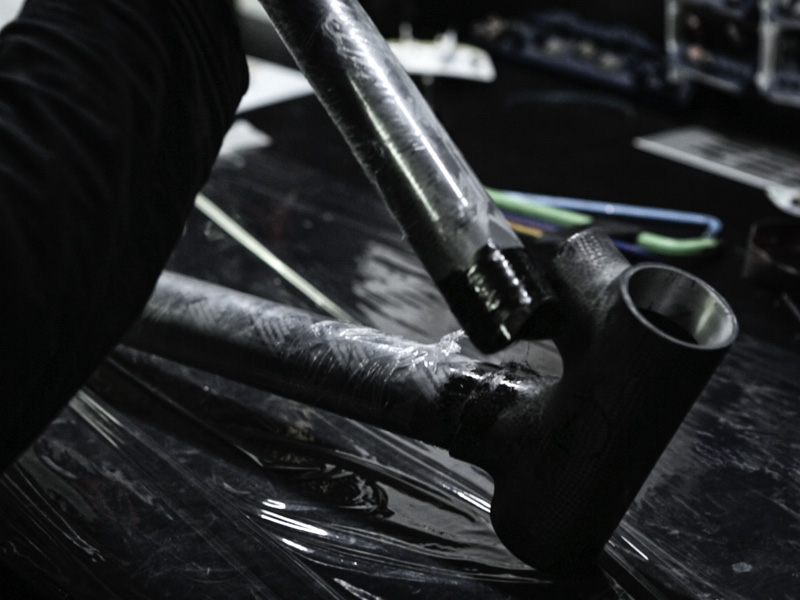
Even though Festka bills the bike as a road race frame, one of the hallmarks of their work is really know what it takes to build a bike to survive the rigors of racing. One of the company owners in an ex-professional cyclist and a successful past national track team member, and so all of their bikes are specifically designed to stand up to abuse. As an aside, Festka does carbon repair on third-party bikes and is acutely aware of the durability compromises some manufacturers make just to cut 100 grams out of a frame’s weight.
What that meant to me is that Festka wholeheartedly supported the idea of me putting in as much gravel and dirt road time on the bike, and didn’t flinch when I mentioned taking the bike on some genuinely rooty and rock-strewn singletrack that made for some good dirt road connections. I shouldn’t have been too surprised after riding to the shop through the center of Prague requires crossing some of the roughest cobblestoned roads that exist. As I wrote in my ride report from the Rapha Gentlemen’s Race, 2/3 of our team rode that event on carbon Zeros and their carbon rims from Rocket Wheels, over the 180km race that included at least a third off-road and some pretty hairy gravel sections and high forest road descents. We had no problems there, and I have to say the only trouble I ever ran into on the bike were pinch-flats when I tested some race-only 23mm clinchers on a long rough gravel road outside of Prague.
Tech Details & Updated Weight
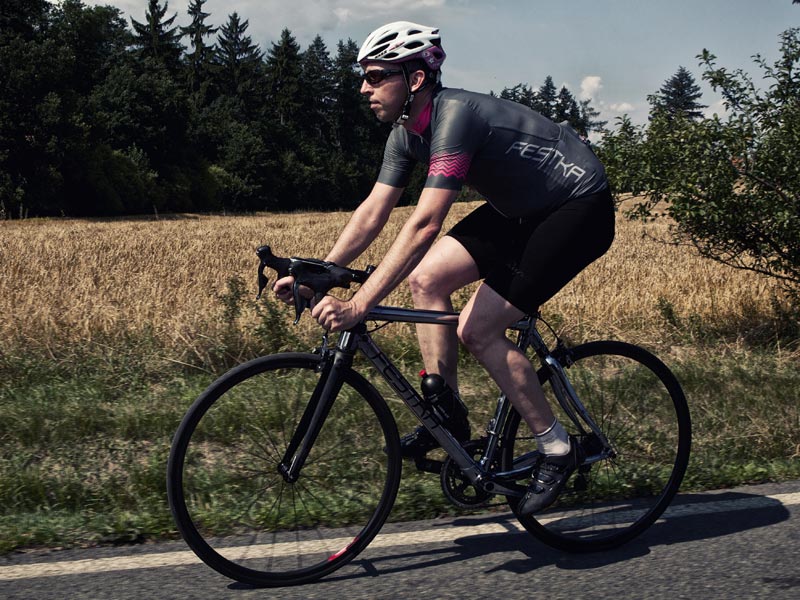
This bike gets its Chrome name from the expensive and time consuming high polish paint job, a first on a carbon frame. I won’t get into it too much, since they clearly were just testing its durability on a carbon frame, but it clearly is as susceptible to scratches as any normal finish, but show the faults even more. I did witness the chrome stand up well to a drill bit to the bottom bracket, because in the hurry to get the bike to NAHBS a drain hole was forgotten until after returning from the show. One side trouble is the chrome finish really wants to be clean, so the aesthetic impact of sweat and road grime are amplified, and the bike begs to be washed (and dried to prevent water spots) regularly.
The setup stayed generally the same as when I wrote my First Impressions post with a 3T and Dura-Ace Di2 build. Early on I swapped the overly stiff 70mm deep wheels and 23mm tubulars for 2omm deep Rocket Wheels and the 25mm version of the same Tufos, and spent the majority of the time on this wheelset. Ultimately this also dropped almost a half a kilo, with a weight down to 7.07kg (15lbs 9oz.) with one less 20g Tune cage and without the 165g Speedplay pedals.
Geometry on my 55cm Medium Zero test bike was a fairly relaxed 72.5 headtube, 73.5 seattube, and 985mm wheelbase, which overall yielded confident predictable handling without feeling twitchy.
Ride Review
So what kind of riding does this bike really want to do?
There is no doubt that the bike wants to go anywhere fast. While the front end is very stiff, which is maybe exacerbated by the overly stiff 3T fork, the bike definitely has the bump eating character we always hope to find in a carbon bike. Don’t get me wrong, you feel every cobble stone and on long pavé sections feel like you might bite your tongue. But on gravel and dirt roads the bike feels really smooth, almost to the extreme of feeling like you are riding on pavement. A lot of this can be attributed to the lightweight and forgiving carbon wheels and 25mm tubulars, which I will do a write-up on of their own in the coming weeks. I rode the same wheels on 2 other bikes, and they seem to make every bike you put them on better; If anything that’s just a reminder not to skimp on wheels when you buy a nice new bike. But I also tested the bike with some uncomfortably stiff aluminum clinchers, and even they felt fine on the Zero.
I think the limitation of surface here is just in tire size. The 25mm Tufo Elite Rides (measuring a true 26.5mm) were the most I could fit in the 3T fork, with barely enough room for the tire to pick up any sand or grit in the rain without threat of gouging the underside of the fork crown. In the back there is plenty of room for a 28mm tire both at the chainstays and adequate space under the brake bridge, but I was very happy with the Tufo 25s for all-around use, so mostly stuck with them.
So where does that all leave us?
Well after 1000+km, 3 rides over 6 1/2 hours, at least 250km off pavement, and a month where every ride over an hour long included at least one soaking downpour, paired with a smooth riding wheelset the Zero feels like it could be an everyday bike that would still be comfortable to take to some big mountains for climbing or to venture off down the first dirt road you can find.
I was pretty hesitant about what I perceived as small tire clearances at the onset of the test that likely arose from the unique proportions of the very oversized carbon frame tubes (and the deep wheels and 23mm tires at the beginning didn’t help with that.) But once I stuck the 25mm tires in there, and even a 28 in the back for one ride, I think I realized how versatile the bike could be. Tufo road tubulars are not known for being overly supple, but they certainly strike a good balance between ride quality and great durability, allowing lower tire pressure (in the 80psi range) and the resulting lower rolling resistance, especially at that 26.5mm width. And with a tube of Tufo’s tire sealant in my pocket, I almost always felt comfortable on both short and long rides.
I also held onto some reluctance to trust a carbon bike’s durability on rough roads and varied surfaces over time. But after reading more and more about the almost limitless fatigue life of properly design carbon fiber parts, hearing the way the Festka designers talk about building durability and stiffness into a frame where it belongs, and seeing how carbon bikes have failed in the past, I feel like it comes down to finding somebody like Festka that builds durability into a frame and responsibly balancing weight savings and stiffness.
So what makes the Zero unique?
Well certainly the lugged construction has a striking aesthetic. I’m not sure I am 100% sold on those giant tubes, and really the oversized King headset looks weird to me. But because of the type of construction, Festka really has the opportunity to plug-and-play different tubes to individual rider needs. When they started to market the Zero they offered 3 different standard rides, something like: lightweight, all-rounder, and indestructible/super stiff racer. Now most of the frames they build are all-rounders, but that customization is still very real and possible and is incorporated on a portion of the production Zeros.
The Zero is unconventional in that Festka puts such a strong focus on R&D. They are so committed to further developing and refining their in-house carbon fiber techniques, that they take full advantage of their close working partnership with the marine and aeronautical carbon experts at Compotech who develop tubing and assembly methods that have yet to be applied to cycling. Festka seems to always have new prototypes being worked on whenever I stop in to visit, both in metals and composites. It feels like their culture of innovation and collaboration with outside experts really shows through in their products.
I’ve been pleasantly surprised at how fresh I’ve felt after long days in the saddle on the Zero, even when my legs were toast. Festka seems to have figured out how to take the know-how from everyone on their team and shoe-horn it into a bike with real world comfort, with little compromise.
Retail price for the Zero frameset with a 3T Rigida Stealth fork, Chris King headset, and a standard paint job is $3600, 59.000 kč, or €2200. Complete builds can be configured directly on their website.
